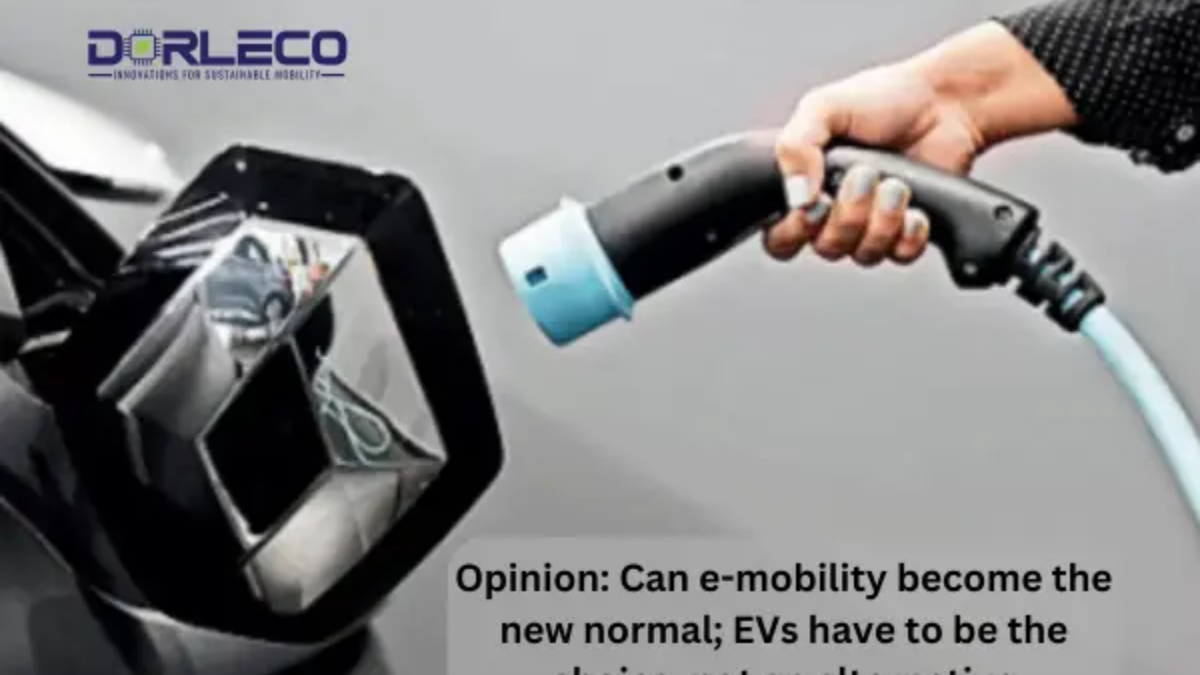The successful integration of electric mobility into people’s daily lives is essential to the widespread acceptance of electric vehicles since it elevates electric mobility beyond a mere alternative. All parties involved, not just industry representatives, must work together to develop a plan that primarily focuses on integrating and rewarding the usage of electric vehicles (EVs).
EVs fit in perfectly with ordinary life. The rate at which this shift occurs will depend on how soon everyone can accomplish a behavior change.
Delhi: Adapting new rules requires changing behavior. A norm like electric mobility needs to alter how people engage and integrate with it, particularly in their everyday lives, to develop a base and prevent a demand plateau, where demand growth tapers off. Only at that point does a disruptive norm transform from a passing trend into a way of life.
This is essential to the success of electric mobility and the component that keeps the wheels rolling. This is not to argue that other elements, such as the availability of reasonably priced electric vehicles and the infrastructure supporting EV charging, are not crucial to the industry’s long-term viability. However, widespread adoption depends on incorporating electric mobility into people’s daily lives so that it becomes their default option rather than merely an alternative.
Behavioural shift
The least resistance is usually the road of choice for humans. Technology or services that are the easiest to use and obtain will always prevail over those that demand more work. Indeed, other considerations like sustainability and environmental degradation play a significant role in decision-making; yet, in a nation like India, these ideas are typically reserved for those with the means to wait a little longer, walk a little farther, or spend a little more.
Any new disruptive norm or technology needs to be both clearly visible and easily accessible for there to be a significant behavioral shift. If these factors are not met, adoption may be slowed down or, worse yet, may not occur at all.
Electric mobility must avoid this at all costs to thrive in the current multimodal transportation ecology. If it is consistently viewed as an option that is either exclusive to the wealthy or as a backup plan to the far simpler ICE (internal combustion engine) concept, it will slow down the transition to more environmentally friendly, cleaner mobility. It will never be able to realize the revolutionary potential it possesses for changing the way the world functions. However, to catch up to ICE and get recognition as a legitimate substitute, it must experience a systemic push that causes a positive behavioral shift.
Joint efforts
There won’t be just one quarter to cause this shock. Every party with an interest in people’s daily lives must work together in concert to achieve this. Electric mobility needs to be visible as a competitive substitute for the status quo. It must be able to demonstrate that just as mobility is essential to economic activity, electric modes are as essential and accessible to the range of mobility options available to all individuals.
The use of ride-hailing as a legitimate substitute for established public transit schemes is the best illustration of this. Amidst the epidemic, a shift in consumer preferences towards ride-hailing resulted in an average 53% YoY increase in the number of users on one specific platform in India between 2015 and 2022.
The Indian EV sector has acknowledged this and is responding to it in several ways, including showcasing the enhanced range, technological innovations, and new features of EVs as well as developing carbon-emission-free ride-hailing models. The industry has provided plenty of evidence that it is moving quickly to switch to electric vehicles.
However, everyone involved—not just industry representatives—must contribute to making electric vehicles the default option. Think tanks, the general public, transit, government agencies, and OEMs (EV and Battery) must all come up with a strategy that emphasizes encouraging and smoothly integrating EVs into everyday life.
For instance, the existing disregard for electric passenger mobility at bus terminals, rail stations, and airports permits internal combustion engine (ICE) cars. to continue being the more conspicuous and easily available form of transportation, providing commuters with the least amount of opposition. A commuter leaving a train station will always choose an ICE car that is being offered just in front unless they are ready to walk a little farther or pay a little bit more.
On the other hand, a client looking for convenience in mobility will choose electric mobility over internal combustion engine (ICE) if a central market has encouraged electric mobility by designating all parking surrounding it as exclusively for electric vehicles. Only by making decisions like these, where electric mobility must take center stage, can there be a real behavioral shift toward greener and cleaner modes of transportation.
However, if a central market has made parking around it only for electric vehicles, encouraging electric mobility, a client looking for convenience in mobility will choose electric over internal combustion engine (ICE). A true behavioral shift towards cleaner and greener modes of transportation can only occur through choices like these, where electric mobility must take center stage.
By merely making electric mobility a more feasible, noticeable, and accessible option to internal combustion engine (ICE) vehicles, the potential of electric mobility can be fully realized. It’s interesting to note that in 1910, 38% of US automobile sales were electric. Electric mobility was not supplanted by internal combustion engines (ICE) until the mass-produced Model T caused a behavioral shift in people’s perceptions of personal mobility, including ownership and access. The moment is near for something to change, but how quickly it does so will rely on how soon people can agree on a behavior change.

